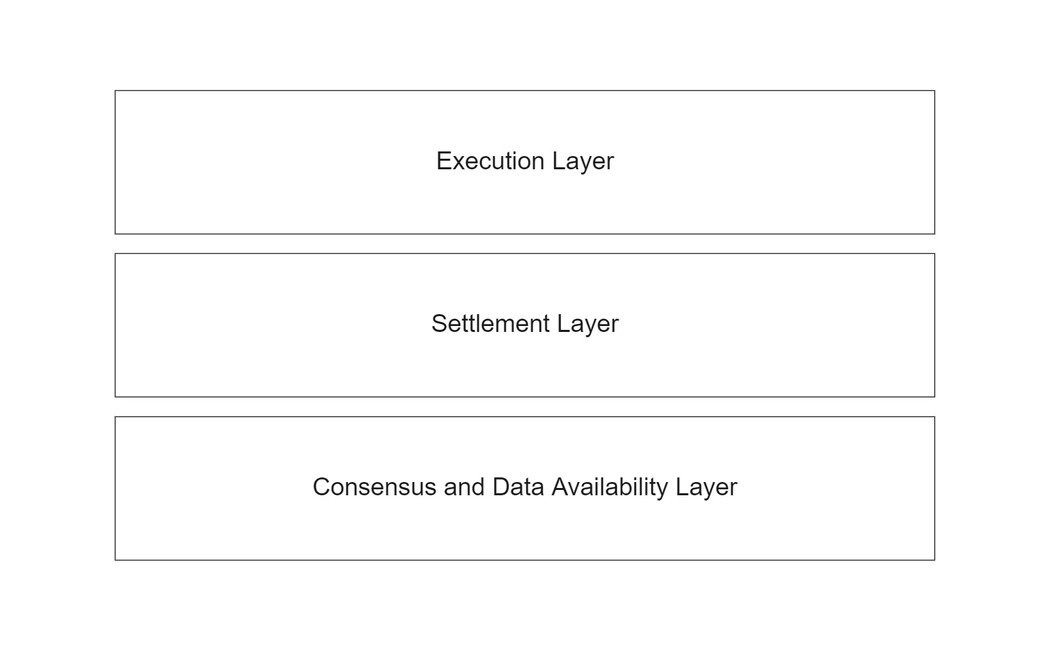Circle's CCTP is Now Live | LayerZero Unveils Project Essence | Catalyst — Cross-Chain Liquidity Layer & More!
Last Week In The Multi-Chain Ecosystem (24 - 30 April '23)
Welcome to LI.FI’s Cross Chain Insider newsletter. If you want to join this community of cross-chain aficionados learning about bridges, interoperability, and the multi-chain ecosystem, subscribe below.
You can also check out LI.FI’s research articles, and follow us on Twitter!
Bridge Updates
1) Circle’s CCTP is Now Live on Ethereum and Avalanche 🔥
Cross-Chain Transfer Protocol (CCTP) is now on mainnet for Ethereum and Avalanche, enabling native USDC bridging. CCTP has already been integrated by cross-chain protocols like LI.FI, Celer, Multichain, Hyperlane, LayerZero, among others.
2) Catalyst — Cross-Chain Liquidity Layer 🧐
Cata Labs announced Catalyst, the cross-chain liquidity layer for the modular future which allows any chain to permissionlessly connect liquidity to that of another chain. Join the whitelist here.
3) LayerZero and Polygon PoS Bridge are Now Live on Polygon zkEVM 💜
LayerZero is now live on Polygon zkEVM, enabling devs building on Polygon zkEVM to seamlessly expand to 30+ supported chains.
Polygon PoS Bridge is now available for Polygon zkEVM with enhanced UX including features such as time estimates, filters, transaction history, etc.
4) Cashmere Exchange is Now on Testnet 💪
Cashmere, an MEV-protected cross-chain swap, is now live on testnet. CashmereLabs will be launched across 11 different chains to facilitate the entry of a diverse range of participants into the ecosystem.
5) LayerZero Unveils Project Essence 🫡
LayerZero introduced a new project codenamed Essence which “ allows anybody to spin up and run a validator (Oracle & Relayer) in <1 hour.”
6) Introducing Omni Network — The First Interoperability Layer for Ethereum 🤔
Omni Network, a next generation interoperability protocol that enables cross rollup apps to become the new standard, announced it has raised $18M to “create a new way forward for Ethereum’s modular future.” Read more.
Multi-Chain Ecosystem Updates
1) First IBC-Enabled EVM Rollup is Here 👏
In collaboration with Evmos and Celestia, Dimension has released ‘ the first IBC-enabled EVM RollApp’ on its 35-C testnet. Read more.
2) Optimism Introduces the Superchain Token List 🔴
Optimism has unveiled the Superchain Token List, offering developers a comprehensive source for token discovery when deploying apps on the Superchain. The list serves as the foundation of the Optimism bridge UI and Base bridge UI.
3) Polygon Labs x Google Cloud 🤝
Google Cloud and Polygon Labs have announced a multi-year strategic alliance to expedite the adoption of key Polygon protocols, such as Polygon PoS, Polygon Supernets, and Polygon zkEVM, through Google Cloud infrastructure and developer tools.
4) Introducing Bonsai, an Optimistic L3 Scaling Solution 🌱
Bonsai, a new optimistic L3 scaling solution designed to support the next generation of web3 social users, has been unveiled. The solution is capable of processing transactions at hyperscale. It is currently available for Lens developers in a closed beta.
5) Mastercard Partners with Solana, Aptos, Avalanche and Polygon 🧐
Mastercard has announced the launch of its new product, Mastercard Crypto Credential, which aims to establish common standards and infrastructure to ensure trusted interactions between consumers and businesses using blockchain networks.
The product has been launched in collaboration with blockchain organisations like Solana, Aptos, Avalanche, Polygon, and crypto wallet providers like Bit2Me Global, Lirium AG, among others.
What’s Popping?
Modularity, Wut Mean?
Seems like these days everything is modular. Blockchains are modular. Banking is modular. My girlfriend last week tried to explain to me that our relationship could be modular too (the love remains the same, but swapping out different partners) ~ 0xjim
You may have heard the term "modularity" being thrown around a lot lately, and with good reason.
In crypto, modularity is an innovative approach to building blockchain systems. Initially, this term was used only in the context of blockchains, but these days, it has made inroads into the cross-chain world, and when something like that happens, we believe it becomes our duty to talk about it (coz who else, if not us, am I right?)
So today, we’ll dive deeper into the term “modularity” and try to understand what it really means in simple terms. Let’s do this!
In one sentence, here’s what modularity means:
Modularity refers to breaking down a complex system into smaller, specialized components or modules that can operate independently and optimize performance for specific tasks.
In the context of blockchains, this would mean that the various tasks of a blockchain (such as consensus, execution, data availability, and settlement) are split into different components, or "modules," each specializing in a specific task.
This modular approach allows the blockchain to operate more efficiently and effectively, as each module can optimize its performance for its specific task.
To help explain this concept, let’s draw a parallel with a company's organizational structure.
Think of modularity like a company's organizational structure. You know how the CEO divides the work into different departments, each responsible for a specific task? Like how the sales team brings in the partnerships and integrations while the marketing team ensures everyone knows about your awesome product?
In a company, the CEO will typically divide the work into different departments, each responsible for its own specific task. For example, the sales department might be responsible for generating revenue, while the marketing department is responsible for promoting the company's brand.
Well, a modular blockchain works kind of like that.
By breaking down the work into smaller, specialized departments or modules, both a company and a modular blockchain can operate more efficiently and effectively. Each module can optimize its performance for its specific task, and the system as a whole can be optimized for performance and scalability.
I believe this majorly has the following benefits:
Modularity allows for greater scalability and efficiency.
In a company, specialized third-party service providers can be used to outsource specific tasks, allowing the company to focus on its core competencies. In a modular blockchain, specific tasks can be outsourced to third-party protocols that specialize in them, further optimizing the blockchain's performance.
Modularity makes it easier to develop and test new features.
In a company, departments can work independently to develop and test new products, services, or marketing strategies. In a modular blockchain, modules can be developed and tested independently, allowing developers to test and refine new features without impacting the rest of the system.
Modularity makes it possible to always have access to the best services in the market.
Modularity enables companies to always access the best services available in the market, providing them with the flexibility to switch service providers if their needs are not met. For instance, if a marketing agency hired by a company does not meeting its expectations , the company can terminate its contract and engage a more competent agency.

Credits: Kram Similarly, in modular blockchains, different service providers can be used for specific layers to meet specific needs. For example, a Rollup using Astria's shared sequencer can switch to Espresso if the former fails to meet their needs or vice versa.
Closing Thoughts
Modularity has become a fundamental concept in the world of blockchain technology, and for good reason. By breaking down complex systems into smaller, specialized components, we can optimize efficiency, scalability, and flexibility.
The modularity approach has already led to exciting developments — modular interoperability protocols, shared sequencers (Astria, Espresso), data availability (Celestia, EigenLayer), among others.
Looking to the future, it's clear that modularity will continue to play a vital role in the evolution of the multi-chain crypto landscape. As more developers embrace this approach and push the limits of what's possible, we expect to see even more exciting innovations and advancements!
Interesting Reads
1) Comparing the top 5 chains by economic activity
2) LI.FI TL;DR — The LI.FI Widget
2) SUAVE, Anoma, Shared Sequencers, & Super Builders
Get Started With LI.FI Today
For more information about the LI.FI protocol,
Head to our link portal at link3.to/lifi
Read our SDK’ quick start’ at docs.li.fi
Join the official Discord server
Follow our Telegram Newsletter
Subscribe on our Substack
or try our any-2-any swaps NOW at jumper.exchange





